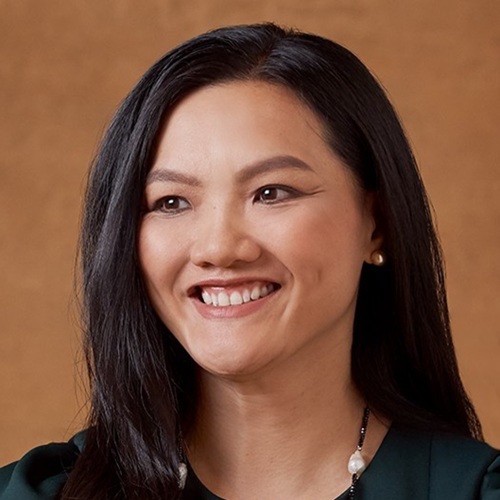
Editor’s note: This is part three of a three-part series about helping the younger generation with financial planning and wealth building. Part one is Four Ways Parents Can Help Kids Be First-Time Home Buyers. Part two is Three Ways Parents Can Transfer Wealth to Help Their Kids.
They say it takes a village to raise a child, and when it comes to teaching the next generation about managing great wealth, it likely takes more than a village. It requires the right strategy, thoughtful intent and sometimes difficult conversations, all preferably done way before the actual asset transfers happen.
In the first two articles of this series, I discussed strategies to help the younger generation with financial planning and wealth building. This article will address how those strategies can also be used to instill wealth education as part of the actual asset transfer. Parents should think of these four strategies as more than financial transactions, but rather, as tools that help wealth education naturally occur for the next generation.
From just $107.88 $24.99 for Kiplinger Personal Finance
Become a smarter, better informed investor. Subscribe from just $107.88 $24.99, plus get up to 4 Special Issues

Sign up for Kiplinger’s Free Newsletters
Profit and prosper with the best of expert advice on investing, taxes, retirement, personal finance and more - straight to your e-mail.
Profit and prosper with the best of expert advice - straight to your e-mail.
1. Adding incentives to your trust.
When most people think of a trust, the primary benefits that come to mind are control, tax efficiency and creditor protection. While these are all valid, a secondary benefit could also be to use the trust to encourage certain behavior by building in the right incentive provisions.
For example, a common trust provision is language that directs or encourages the trustee to be liberal with the use of the trust funds for certain endeavors that are important to the grantor (i.e., the parent or creator of the trust). The use of the trust fund could be for education, starting a business, buying a first home or anything that the grantor feels aligns with their values. Another common provision is to connect trust distributions to the beneficiaries achieving certain goals, such as graduating from college.
Sometimes, I see incentive language that provides the trustee with the ability to match trust distributions to the amount of income earned by the beneficiary, in order to encourage the beneficiaries to be independent and productive members of society.
Careful and creative trust drafting can help the grantor to heavily influence the next generation by instilling values to the beneficiary via the trust structure. That said, I do want to provide a word of caution: Too much control and too many restrictions can backfire. I have seen beneficiaries grow resentful of the parameters placed on the trust. However well-meaning, these kinds of incentive provisions can be interpreted as a parent trying to rule from the grave.
My advice here is that the grantor should have a discussion with the trustee and beneficiaries (assuming it’s age appropriate) before the trust is created so that everyone understands and appreciates the intent and wishes behind these incentive provisions.
2. Getting the beneficiary involved as a trustee.
If there is a family trust, getting the child meaningfully involved as a trustee is a good way to engage and teach the next generation about the responsibility and stewardship of the trust assets. After all, the trust assets are intended to benefit the child, and as such (and barring any special circumstances), it seems appropriate that the child has a say in the use and management of the trust assets.
While I would not counsel naming the child as the sole trustee, it may be advisable to name the child as a co-trustee, along with another trusted individual or an institutional trustee. This way, the child has a seat at the table when it comes to the management of trust assets and can be part of the decision-making in terms of investment, distribution and administration of the trust fund.
This is especially advantageous for trusts that have a distribution tied to a beneficiary reaching a certain age. What better way for the child to learn how to responsibly manage money than to be a co-trustee of the trust while the assets are still in the protective confines of the trust structure?
For example, if the trust were to distribute its assets upon the child turning age 30, you can appoint the child as co-trustee upon turning 25. The child will then have five years as trustee to become meaningfully involved with the trust assets, which hopefully will prepare them well for when the trust distributions come later on in life.
3. Appointing a family steward via an LLC or FLP.
For those with adult children who have assets of their own, a family limited partnership (FLP) or limited liability company (LLC) is also another great way to get the whole family involved. Wealthy families often pool their resources to form an FLP or LLC, and together, they manage the assets held by the entity as a family unit. One of the adult children can be named as the managing partner or manager of the entity. This brings economy of scale when it comes to the investments and also gives transparency and leadership opportunities to the next generation.
For families with significant wealth, the governance of these entities can become complex. It can start to resemble and operate much like a business, with its own board of directors, officers and advisory members. Adult children, with the guidance of the older generation, are in the business of running the family assets.
4. Engaging the next generation in philanthropy.
Another wonderful way to educate children about managing wealth is by involving the next generation in giving back to the community. For example, making a budget for donations and learning to perform due diligence on the selection of charities are transferrable skills when it comes to managing an investment portfolio or other family assets. Starting the education with a small donation amount as a charitable gift is a relatively low-risk way to get a child involved.
For families who have created charitable entities, whether a private foundation, charitable split trust or donor-advised fund, you can consider giving an adult child an official role by naming them as a manager or trustee of the entity, or as an adviser, as the case may be. By bringing the next generation together in the family’s philanthropic endeavors, you are also providing a space in which you can discuss family values with a common purpose.
As wealth transfers to the next generation, wealth planning will also change. I hope this article and the series have been helpful for engaging and preparing the next generation of wealth holders and creators.
Wilmington Trust is a registered service mark used in connection with various fiduciary and non-fiduciary services offered by certain subsidiaries of M&T Bank Corporation. Note that tax, estate planning, investing, and financial strategies require consideration for suitability of the individual, business, or investor, and there is no assurance that any strategy will be successful. Wilmington Trust is not authorized to and does not provide legal, accounting, or tax advice. Our advice and recommendations provided to you are illustrative only and subject to the opinions and advice of your own attorney, tax advisor, or other professional advisor.
Related Content
- How Might the Great Wealth Transfer Change Society?
- Gen X Should Prepare Now for the Great Wealth Transfer
- Your Home Would Be a Terrible Inheritance for Your Kids
- Three Essential Strategies for Managing Your Inheritance
- Six Steps to Take if You've Recently Inherited Money From a Loved One
Profit and prosper with the best of Kiplinger's advice on investing, taxes, retirement, personal finance and much more. Delivered daily. Enter your email in the box and click Sign Me Up.

Alvina Lo serves as Head of Advice, Planning and Fiduciary Services for BNY Wealth. In this role, she leads the strategic direction, oversight and delivery of BNY Wealth’s advice planning advisory practice and fiduciary services. Alvina has 20-plus years of experience advising high-net-worth individuals and families, family offices, business owners and charitable organizations. Prior to joining BNY, she served as Chief Wealth Strategist for Wilmington Trust, where she was responsible for wealth planning, family office services and thought leadership development.
-
 'Donroe Doctrine' Pumps Dow 594 Points: Stock Market Today
'Donroe Doctrine' Pumps Dow 594 Points: Stock Market TodayThe S&P 500 rallied but failed to turn the "Santa Claus Rally" indicator positive for 2026.
-
 The Wealth Equation: Balancing Money and Stress
The Wealth Equation: Balancing Money and StressSponsored Don’t let assets be a liability that strains your family.
-
 Is Your Emergency Fund Running Low? Here's How to Bulk It Up
Is Your Emergency Fund Running Low? Here's How to Bulk It UpIf you're struggling right now, you're not alone. Here's how you can identify financial issues, implement a budget and prioritize rebuilding your emergency fund.
-
 Is Your Emergency Fund Running Low? Here's How to Bulk It Back Up
Is Your Emergency Fund Running Low? Here's How to Bulk It Back UpIf you're struggling right now, you're not alone. Here's how you can identify financial issues, implement a budget and prioritize rebuilding your emergency fund.
-
 An Expert Guide to How All-Assets Planning Offers a Better Retirement
An Expert Guide to How All-Assets Planning Offers a Better RetirementAn "all-asset" strategy would integrate housing wealth and annuities with traditional investments to generate more income and liquid savings for retirees.
-
 7 Tax Blunders to Avoid in Your First Year of Retirement, From a Seasoned Financial Planner
7 Tax Blunders to Avoid in Your First Year of Retirement, From a Seasoned Financial PlannerA business-as-usual approach to taxes in the first year of retirement can lead to silly trip-ups that erode your nest egg. Here are seven common goofs to avoid.
-
 How to Plan for Social Security in 2026's Changing Landscape, From a Financial Professional
How to Plan for Social Security in 2026's Changing Landscape, From a Financial ProfessionalNot understanding how the upcoming changes in 2026 might affect you could put your financial security in retirement at risk. This is what you need to know.
-
 6 Overlooked Areas That Can Make or Break Your Retirement, From a Retirement Adviser
6 Overlooked Areas That Can Make or Break Your Retirement, From a Retirement AdviserIf you're heading into retirement with scattered and uncertain plans, distilling them into these six areas can ensure you thrive in later life.
-
 I'm a Wealth Adviser: These Are the 7 Risks Your Retirement Plan Should Address
I'm a Wealth Adviser: These Are the 7 Risks Your Retirement Plan Should AddressYour retirement needs to be able to withstand several major threats, including inflation, longevity, long-term care costs, market swings and more.
-
 High-Net-Worth Retirees: Don't Overlook These Benefits of Social Security
High-Net-Worth Retirees: Don't Overlook These Benefits of Social SecurityWealthy retirees often overlook Social Security. But timed properly, it can drive tax efficiency, keep Medicare costs in check and strengthen your legacy.
-
 Do You Have an Insurance Coverage Gap for Your Valuables? You May Be Surprised to Learn You Do
Do You Have an Insurance Coverage Gap for Your Valuables? You May Be Surprised to Learn You DoStandard homeowners insurance usually has strict limits on high-value items, so you should formally "schedule" these valuable possessions with your insurer.
